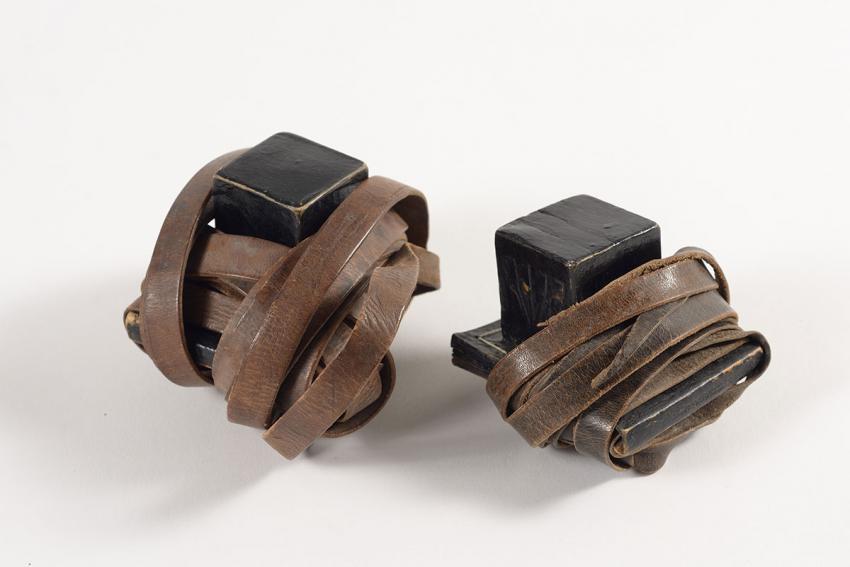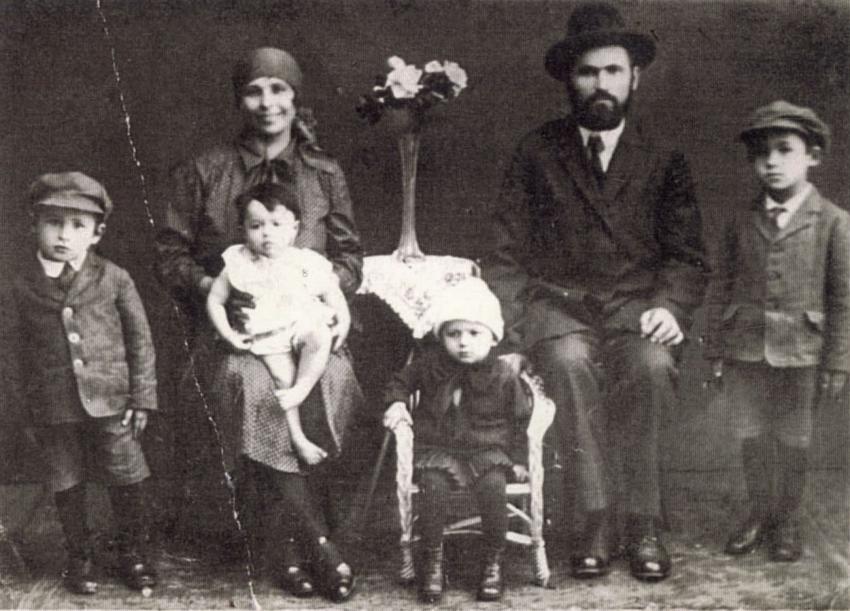These tefillin served Mordechai, his sons and their friends in the DP camp after liberation. Mordechai Moskovits saw the tefillin as an object filled with symbolism after surviving the Holocaust, and he continued to use them until his death in Israel in 1966.
Mordechai and Cipora Moskovits from Nagy-Banya in north Transylvania had seven children: Chaim, Shaul, Leah, Rachel, Zvi, Heddi and their youngest son, Zelig, who was born in 1940. The family belonged to the Vizhnitz Hassidic sect and Mordechai was the manager of a workshop that made prayer-shawls and tablecloths. After the area was annexed by Hungary, Chaim, the oldest son, was drafted into the Hungarian labor battalions, where he perished.
When the Germans occupied Hungary, the Moskovits family was confined in the ghetto established in an abandoned factory outside the town. Shortly afterwards, they were deported to Auschwitz-Birkenau, where Cipora, Zelig, Leah and Heddi were murdered on arrival. Rachel was sent to a series of labor camps but did not survive. Mordechai, Shaul and Zvi were sent to several labor camps, the last one being Allach, a sub-camp of Dachau.
In late April 1945, the Nazis made preparations to flee. There was a heavy Allied bombardment on 30 April 1945. "The next day, after a night of artillery fire we suddenly saw an American jeep that had arrived to liberate us," recalled Zvi Miron (Moskovits).
Shortly after liberation, Mordechai, Shaul and Zvi made their way to Munich. On the way they passed a cemetery:
"…We immediately recognized the cemetery as a Jewish one. We went in and saw the purification room… A bearded older man came out and asked us what we wanted… He told us what had happened to the cemetery and said that he had a surprise for us. He took us to the attic of one of the buildings and there we found several Torah scrolls, tefillin, prayer books and other holy books… Then I said to him, 'Listen, we need them for our prayers, so perhaps you can give us the tefillin and the Torah scroll?'"
Mordechai and his two sons returned to their town in Transylvania, and immigrated to Israel in the late 1940s.
Yad Vashem Artifacts Collection
Courtesy of Shaul Moskovits, Bnei Brak, and Zvi Miron (Moskovits), Herzliya, Israel




